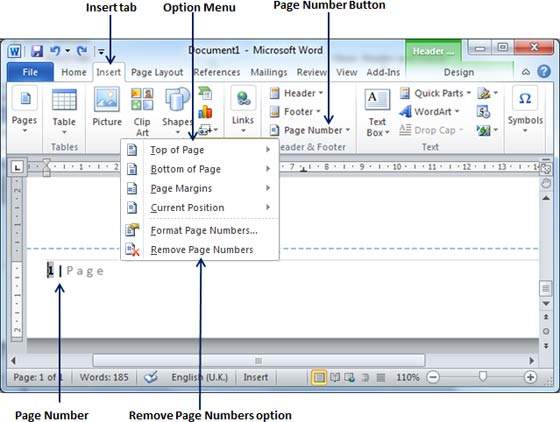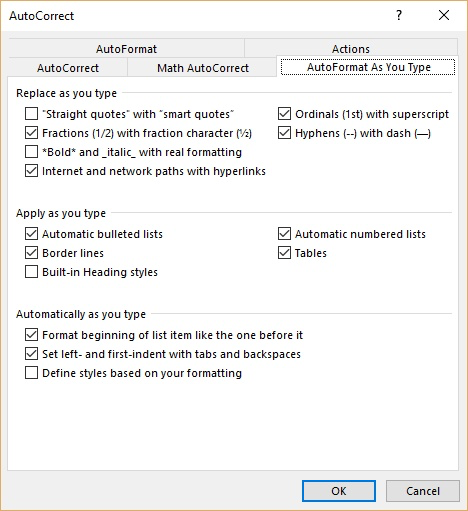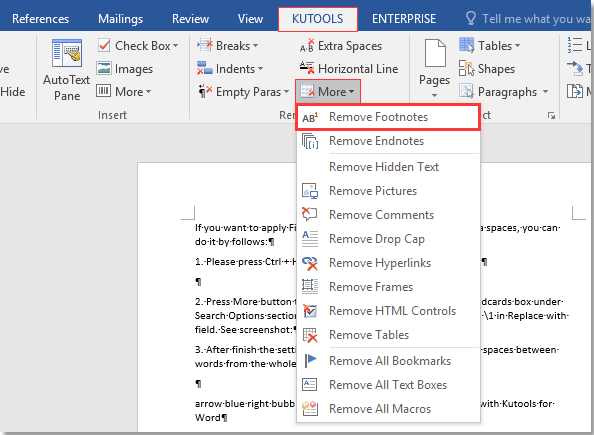

- #Remove foratting in word for mac 2010 how to#
- #Remove foratting in word for mac 2010 manual#
- #Remove foratting in word for mac 2010 full#
#Remove foratting in word for mac 2010 how to#
Here’s how to properly format your headers and footers on a Microsoft document before printing, for both a Mac and PC: 1. Headers and FootersĪs previously mentioned, the margin sizes you assign to the top and bottom of your document defines the amount of space you will have to place running title headers or page numbers. The same rule applies for your page numbers if they’re in the footer. If you’re going to have the title of your book in the header, your margin size defines how much room you have for the title. We recommend never making the left or right margins smaller than a half-inch, as text can get lost in the spine of the book after it’s bound.Īdditionally, depending on what you have in your headers and footers, you may want to make your top and bottom margins larger or smaller. If you want larger or smaller margins on the left and right, that’s okay. It is important to note that there’s flexibility in these values. Next, click the ‘Margins’ tab, click ‘Custom Margins’ at the bottom of the options, and change Top, Bottom, Left and Right margins to 0.75”. 5.5 x 8.5 is a common book printing choice that is easy to work with. Click on ‘Size’ and choose 5.83 x 8.26 inches for Macs. Create a New Document, and Click ‘Layout’ Mac:Ģ. Whether this is the case or you have yet to get started, you’ll need to open a brand-new Word document that you can copy and paste your text into for the best formatting results.
#Remove foratting in word for mac 2010 full#
When you originally typed your manuscript, you more than likely opened a blank Word document and went full steam ahead. If you’re operating on an older version, some of the prompts may be slightly different from what you see below. Subscribe to get more articles like this oneĭid you find this article helpful? If you would like to receive new articles, join our email list.We’ll walk you through the steps to format your Word document for printing a book that is a 5.8” x 8.3” finished size on a Mac, or a 5.5” x 8.5” finished size on a PC.Įditor’s note: This tutorial uses settings and options from the latest version of Microsoft Word, for Mac or a PC. Moving forward, it’s best practice to use paragraph spacing (before and after paragraphs) to handle spacing rather than pressing Return or Enter twice after titles, subheadings and body paragraphs. You can use it to find and replace formatting, styles and other special characters. If you want to remove all instances of two hard return and replace with one hard return, click Replace All.īelow is the expanded Find and Replace dialog box:įind and Replace is an extremely useful dialog box in Word. Click Replace and then click Find Next to go to the next instance.Ensure there is nothing in the Replace with box by pressing Delete (multiple times if necessary).

Two paragraph mark codes should appear (his represents two hard returns).

#Remove foratting in word for mac 2010 manual#
Click Show/Hide ¶ in the Paragraph group Paragraph marks, tabs, spacing and manual page breaks will display but will not print.To view hard returns or paragraph marks and other non-printing characters in Microsoft Word: Recommended article: How to Add or Remove Page Breaks in Microsoft Wordĭo you want to learn more about Microsoft Word? Check out our virtual classroom or live classroom Word courses > Showing hard returns or paragraph marks The fastest way to remove extra hard returns (typically two hard returns) is to use Word’s Find and Replace command and special characters. In Word, it’s better not use use hard returns (where you’ve pressed Enter or Return) to handle spacing after paragraphs or create new pages. In order to view and delete hard returns, you should display paragraph marks or symbols. You can easily remove or delete hard returns or paragraph marks in Microsoft Word using Find and Replace. Remove Paragraph Marks or Hard Returns in Microsoft Word DocumentsĪrticle by: Avantix Learning Team | Updated January 10, 2021Īpplies to: Microsoft ® Word ® 2010, 2013, 2016, 2019 or 365 (Windows)


 0 kommentar(er)
0 kommentar(er)
